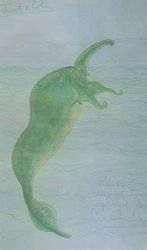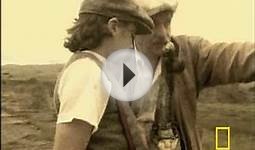Ness Monsters
 The Loch Ness Monster - Nessie - is always there; no matter what people say, and no matter what evidence fails to come in, it never goes away. I’ve participated in several TV documentary on the LNM in the last few years and all – no matter how many sceptical scientists they feature, no matter how many negative points they cover – work hard to leave the case open, as if we can still hold out hope that a giant, undiscovered aquatic animal awaits discovery in the loch. In reality, there’s no reason at all to think that it does.
The Loch Ness Monster - Nessie - is always there; no matter what people say, and no matter what evidence fails to come in, it never goes away. I’ve participated in several TV documentary on the LNM in the last few years and all – no matter how many sceptical scientists they feature, no matter how many negative points they cover – work hard to leave the case open, as if we can still hold out hope that a giant, undiscovered aquatic animal awaits discovery in the loch. In reality, there’s no reason at all to think that it does.
Just to prove that international interest in the monster remains, new photos get their fair share of media attention every few years, and within recent months another supposedly interesting image appeared. It was quickly shown to be yet another hoax, as discussed below. The article here is a revamped version of one that appeared on Tet Zoo ver 2 in December 2007. Oh, and now is a good time to mention sceptical approaches to cryptozoology since Daniel Loxton and Donald Prothero have just published their new cryptozoology-themed book Abominable Science! Origins of the Yeti, Nessie, and Other Famous Cryptids. I haven’t seen the final published product yet, but I was a reviewer (and blurb-writer) so am familiar with its contents. I certainly agree with them on the subject of Nessie.
Oh, and now is a good time to mention sceptical approaches to cryptozoology since Daniel Loxton and Donald Prothero have just published their new cryptozoology-themed book Abominable Science! Origins of the Yeti, Nessie, and Other Famous Cryptids. I haven’t seen the final published product yet, but I was a reviewer (and blurb-writer) so am familiar with its contents. I certainly agree with them on the subject of Nessie. Anyway…
Anyway…
I will begin by essentially repeating what I just said above: there is no good evidence supporting the existence of any large unknown animal in Loch Ness, and I am of the opinion that sightings and photographic and sonar evidence can be satisfactorily explained as mistaken or embellished encounters with known animals (including swimming deer, water birds, seals, and small cetaceans), waves, or optical illusions. I say this, not because I’m a knee-jerk debunker who cannot accept the idea that a big unknown animal might exist in a big body of water, but because I am familiar with the evidence, such as it is, and find it wanting. The expectation that there's an unknown animal in Loch Ness almost certainly explains the recent history of sightings. In other words, any weird bump or lump or shape that emerges from the loch is identified as a monster. Contrary to some sources, there is no tradition of sightings, nor are there old historical reports or anything like that pre-dating the 1930s (Magin 2001).
Contrary to some sources, there is no tradition of sightings, nor are there old historical reports or anything like that pre-dating the 1930s (Magin 2001).
Easily the most iconic Loch Ness Monster image is the one shown here and above: the so-called Surgeon’s photo, or the Wilson photo. Taken in April 1934 by, supposedly, London-based gynaecologist Robert K. Wilson while he was on holiday, it shows a dark, erect-necked object surrounded by ripples. Analysis of the wave patterns around the object indicated to LeBlond & Collins (198) that it's about 1.2 m tall, though I personally suspect that this is an over-estimate. Some people say that the photo was taken on April 14th, others say April 1st. The version we usually see of this photo is cropped: the original image (shown here) is much larger, shows the opposite shore of the loch, and makes the ‘monster’ appear much smaller. A second photo is supposed to show the head alone as the object is submerging, but it looks nothing like the famous first image and I see no reason to think they really were taken within seconds of each other as has been claimed.
бэтбум
You might also like











 The Loch Ness Monster is a roller coaster located of Busch Gardens Williamsburg. Designed by Ron Toomer of Arrow Dynamics, the Loch Ness Monster was the world's tallest roller coaster when it opened in 1978. It was the first continuous circuit coaster and is a coaster to contain interlocking loops. In 2008, the ride celebrated its 30th...
The Loch Ness Monster is a roller coaster located of Busch Gardens Williamsburg. Designed by Ron Toomer of Arrow Dynamics, the Loch Ness Monster was the world's tallest roller coaster when it opened in 1978. It was the first continuous circuit coaster and is a coaster to contain interlocking loops. In 2008, the ride celebrated its 30th...
